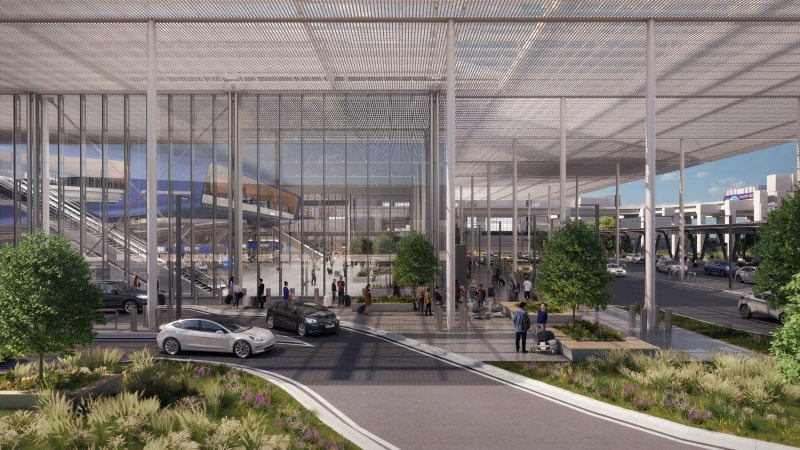
Key takeaways:
- Aging infrastructure struggles with demand: most U.S. airports, averaging over 80 years old, can’t handle modern security needs or rising passenger volumes.
- Innovative design improves efficiency: solutions like elevated security areas and expanded terminals ease congestion and enhance the travel experience.
- Airlines and airports adapt to growth: Airlines invest in larger aircraft, but airports must expand and modernize to manage increasing passenger volume.
Every year, the holiday season brings a tide of air travelers surging to airports across the United States. Airlines for America, an airline industry association, predicted record travel in the months of December and January, with airports hosting more than 50 million passengers.1 This influx of air travelers, coupled with the overall increase in air travel in the last few years, exposes millions of travelers to America’s most desirable and least desirable airports. The most desirable airports have evolved to accommodate the increase in air passenger volume. This increase in volume, enabled by modern larger aircraft, is most noticed at security processing and puts considerable strain on parking, curbside drop-off, check-in, and waiting areas at the gate. The evolution of America’s most desirable airports has all been driven by intentional design addressing passenger volume in these key areas.
The average airport terminal in the United States is 40 years old.2 Nearly all airports in America were designed and built before the increased security standards established by the U.S. Department of Homeland Security after the terrorist attacks of September 11, 2001.3 Of the 50 largest airports in the United States, a list which includes Hartsfield-Jackson Atlanta International Airport, Chicago O’Hare International, Miami International, and Los Angeles International Airport, the average age is 82 years old.4
Airline travel has increased by nearly 50% in the last two decades. Yet, in that same period of time, no new major airports were built in the United States. Denver International Airport, the last large airport built in the United States, opened in February of 1995, six years before the increased security protocols launched in response to 9/11. Today, Denver International is one of the busiest airports in the world, hosting nearly 70 million passengers in 2022.5 There has not been a single major airport designed and built, in its entirety, after 9/11. This means the 50 largest airports in America are processing more than 700 million passengers annually through mostly outdated, retrofitted, and sometimes redesigned infrastructure.
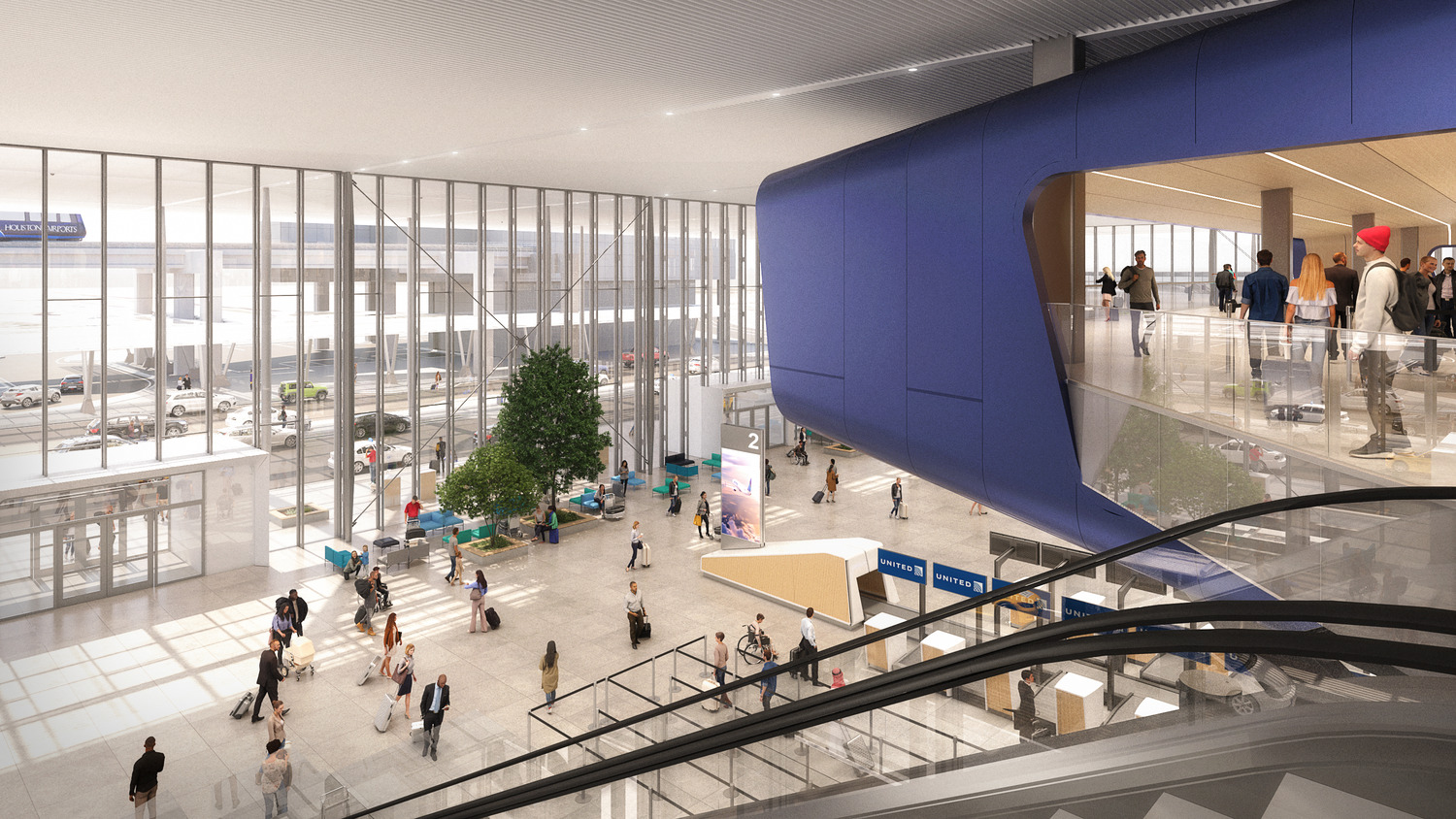
Modern security requirements demand a larger footprint of space for specifically designed security machines such as the newest CT scanners, which look like miniature jet engines and take up in excess of 200 square feet per machine, multiplied by upwards of five machines per security area, totaling more than 1,000 square feet. This is the equivalent of a two-car garage at every security processing area – just for the baggage scanners. America’s oldest airports, limited by outdated design, are often unable to accommodate such a large footprint for today’s heavy security equipment.
Addressing these spatial constraints is the focus of the design teams of Page and Grimshaw, who have only three years to expand Terminal B at George Bush Intercontinental Airport, which is a formidable challenge of unparalleled timing. Limited by dimensional restrictions and antiquated architecture, the designers opted to lift the entire security processing area off the ground floor of the terminal and into a vessel-like structure that seemingly floats near the terminal's ceiling. This creative design solution more than doubles the space available for security processing, increasing the number of check-in counters from 12 to 24 and the number of security lanes from four to 14.
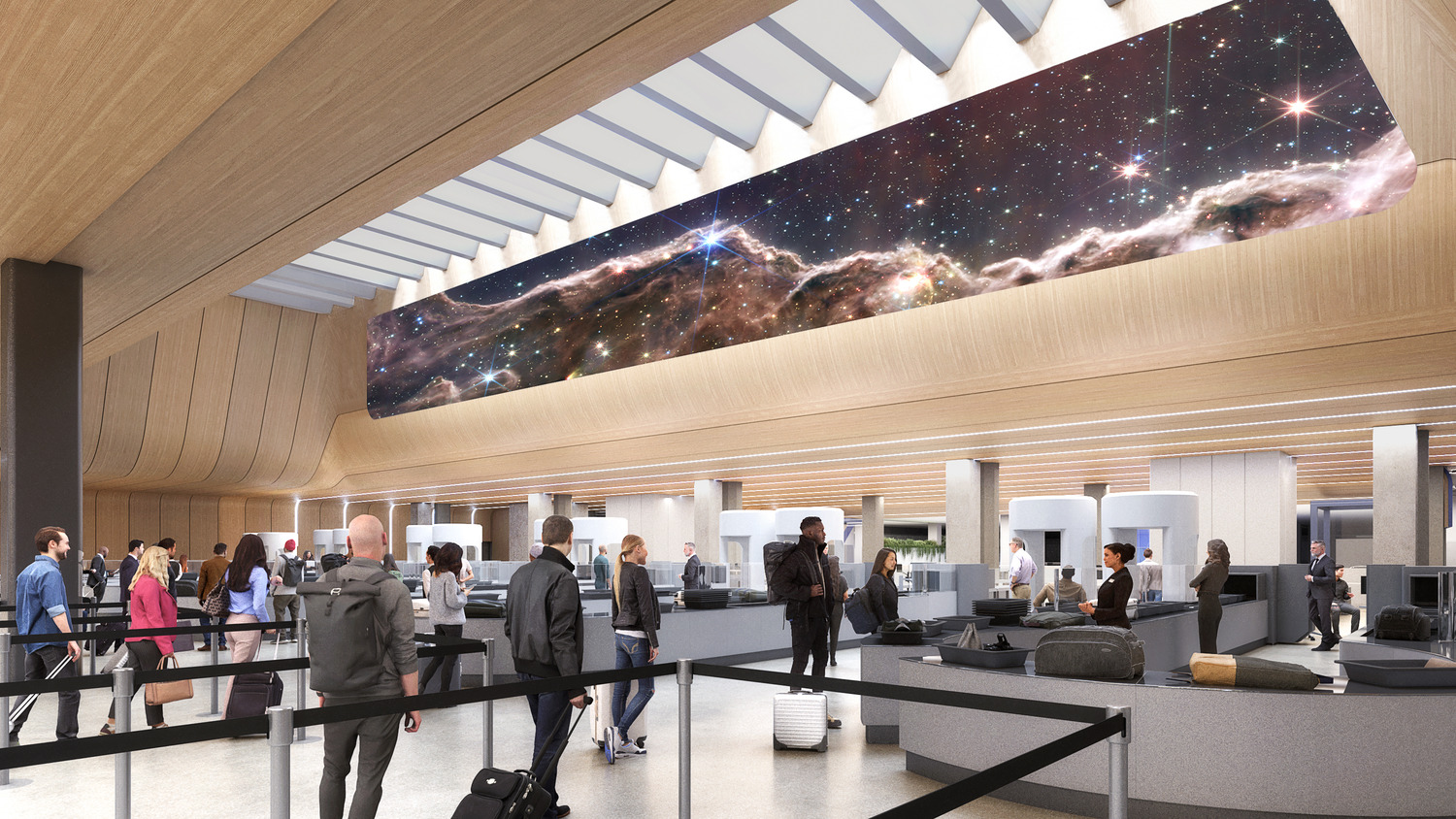
The old age and antiquated design of major airports in the United States may be the largest factor in air passenger processing delays and terminal congestion. Demand for air travel has increased significantly over the last twenty years, and recent data shows no signs of cooling demand.6 Airlines have a clear and irrefutable financial incentive to monetize the increased demand, yet they face a dearth of options to capture the influx of interested air travelers. Adding new routes or additional flights to existing routes is limited by the number of operational runways at existing major airports. Faced with this immutable challenge, airlines are moving to add larger aircraft to their inventory and deploying those aircraft to add capacity to their most popular routes.
United Airlines, the world’s largest airline by fleet size and passenger destinations, announced plans to purchase more than 100 high-volume aircraft.7 Andrew Nocella, United’s Chief Commercial Officer, cited limitations of airport runways and terminal gates as the primary factor behind their decision to invest in higher volume aircraft.
United aims to increase passenger volume by 40% over the next three years by swapping smaller aircraft for newer, larger aircraft from Boeing and Airbus. Fifty of the more than 100 high-volume aircraft purchased by United are Boeing’s new 787-9. United will swap older Boeing 767s for the newer 787-9 Dreamliner, adding 129 seats to hundreds of routes worldwide.
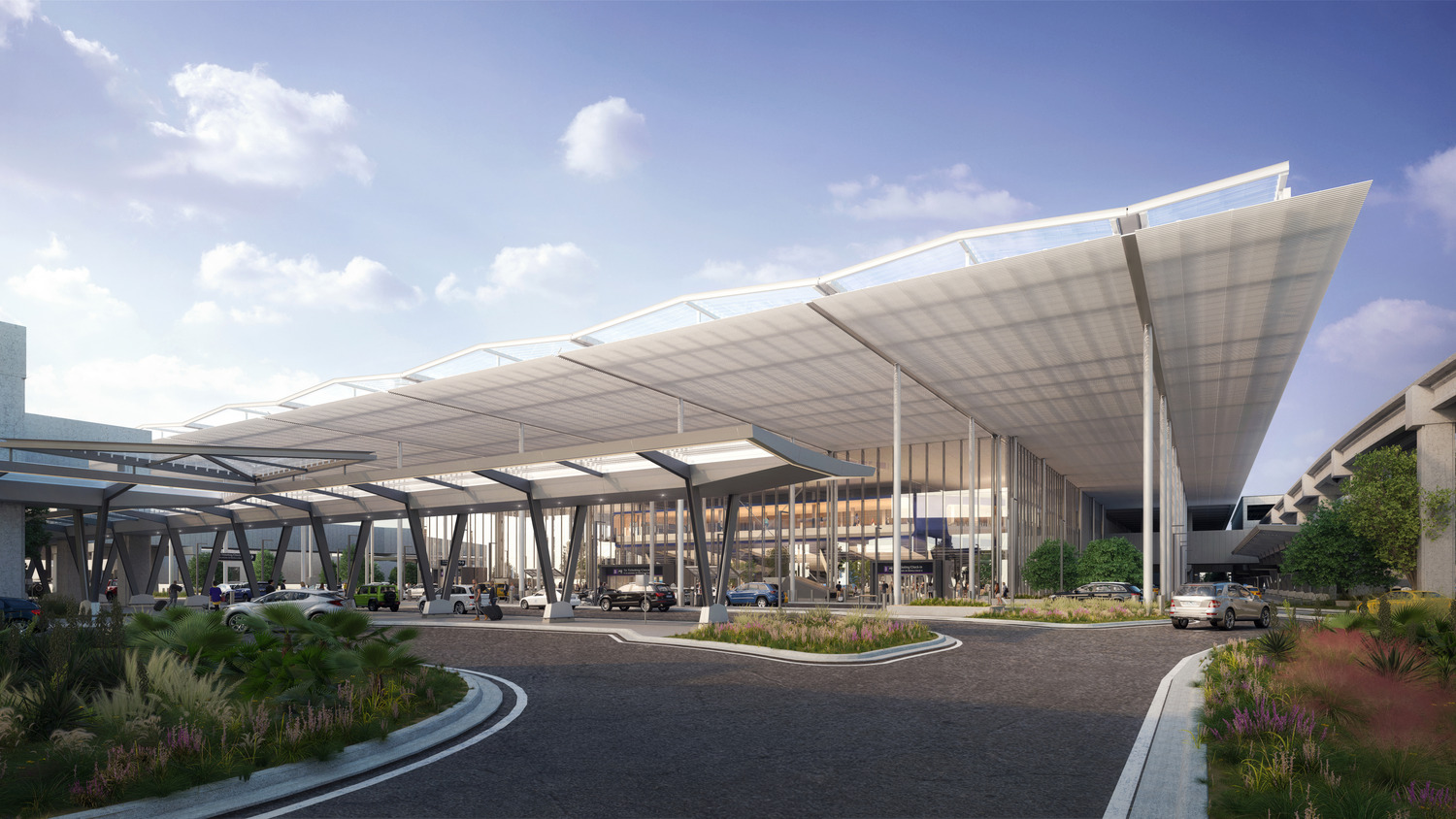
The addition of higher-volume aircraft bypasses the challenge of insufficient runways and terminal gates. Major airlines' investment is proving successful in adding additional passengers to existing air routes, but this increased passenger volume has also significantly contributed to increased airport congestion. The trickle-down effect of adding 129 seats to hundreds of flights around the country impacts everything from airport parking to inter-terminal transportation, check-in and security processing, terminal seating, and more.
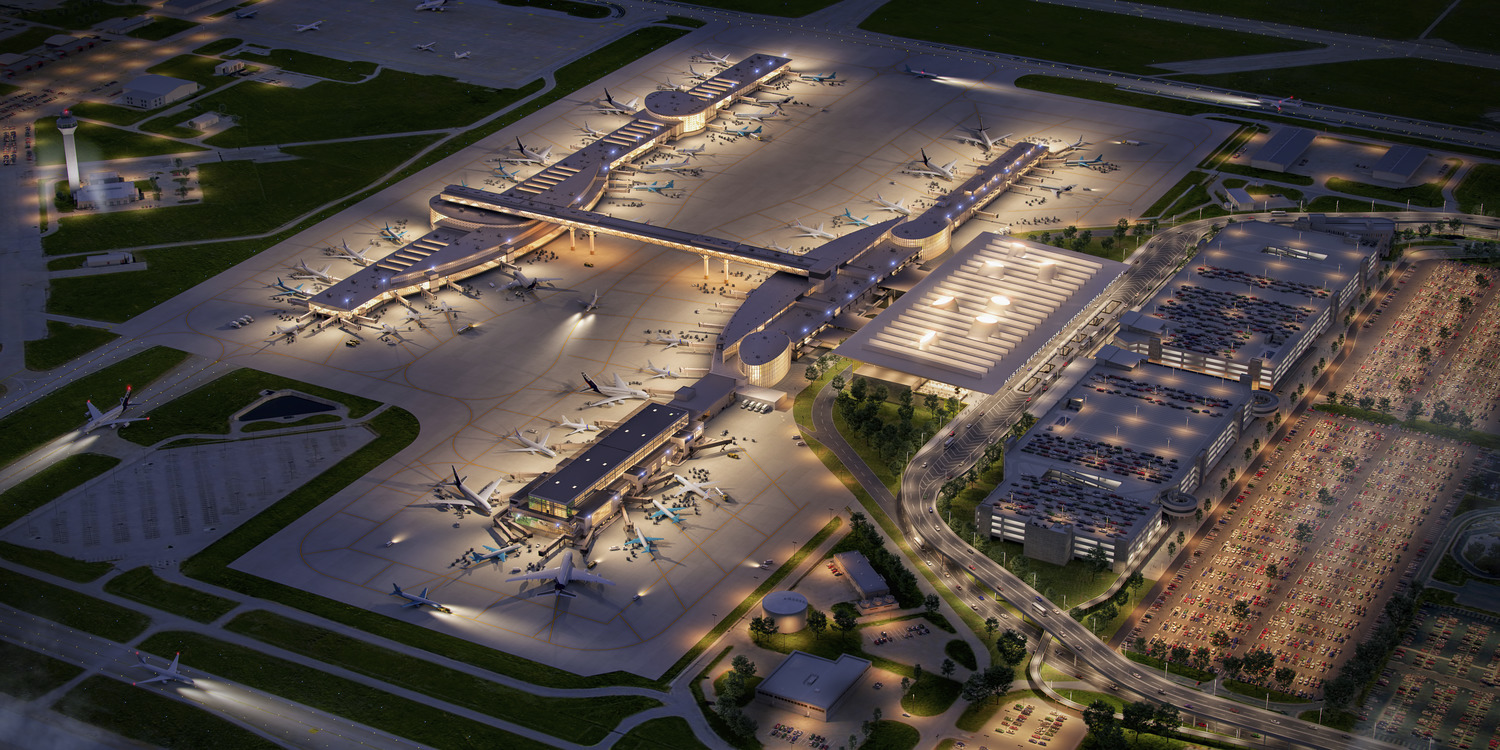
Austin-Bergstrom International Airport is one of the fastest-growing airports in America.8 The Page design team is again tackling passenger congestion with the West Gate Terminal Expansion Project. Located just 160 miles from George Bush Intercontinental Airport, where Page also addressed similar challenges, this project adds 84,500 sq ft across three levels, including three new gates, expanded gate seating areas, retail and dining spaces, and other essential amenities, all while keeping the terminal fully operational during construction.9
As demand for air travel continues to grow, airports around the country must address outdated designs and invest in the overall passenger experience. This investment in terminal redesign (or terminal expansion) can add capacity throughout the entire passenger experience, from parking and curbside drop-off to baggage pick-up. Increased demand for air travel will be met with increased competition between airports, and the country’s newest terminals and hubs will win big.
Jennifer Wegner, a contributor to this story, is the Editorial Manager at Page.
References:
- U.S. Airlines to Transport Record Number of Travelers Over the Winter Holiday Period. (December 9, 2024.) Airlines for America. Available at: https://www.airlines.org/news/u-s-airlines-to-transport-record-number-o…
- America’s airport glow-up. (December 6, 2022.) Washington Post. Available at: https://www.washingtonpost.com/travel/2022/12/06/airport-renovations-de…
- First New U.S. Airport Built Since 9/11 Gets Off the Ground. (November 1, 2005). National Defense Magazine. Available at: https://www.nationaldefensemagazine.org/articles/2005/10/31/2005novembe…
- Why Is It So Hard to Build an Airport? (March 4, 2024.) Construction Physics. Available at: https://www.construction-physics.com/p/why-is-it-so-hard-to-build-an-ai…?
- Denver International Airport is one of the busiest airports in the world. Fly Denver. Available at: https://www.flydenver.com/
- Global Outlook for Air Transport: Highly Resilient, Less Robust. (June 2023.) International Air Transport Association. Available at: https://www.iata.org/en/iata-repository/publications/economic-reports/g…
- US carriers accelerate to bigger planes to overcome operating constraints. (October 5, 2023.) Reuters. Available at: https://www.reuters.com/business/aerospace-defense/us-carriers-accelera…
- Airport Advisory Commission accepts FAA grants for airport expansion. (June 14, 2024.) Austin Monitor. Available at: https://www.austinmonitor.com/stories/2024/06/airport-advisory-commissi…
- Journey with AUS - The Austin-Bergstrom Airport Expansion & Development Program. Austintex.gov. https://www.austintexas.gov/AUSJourney
